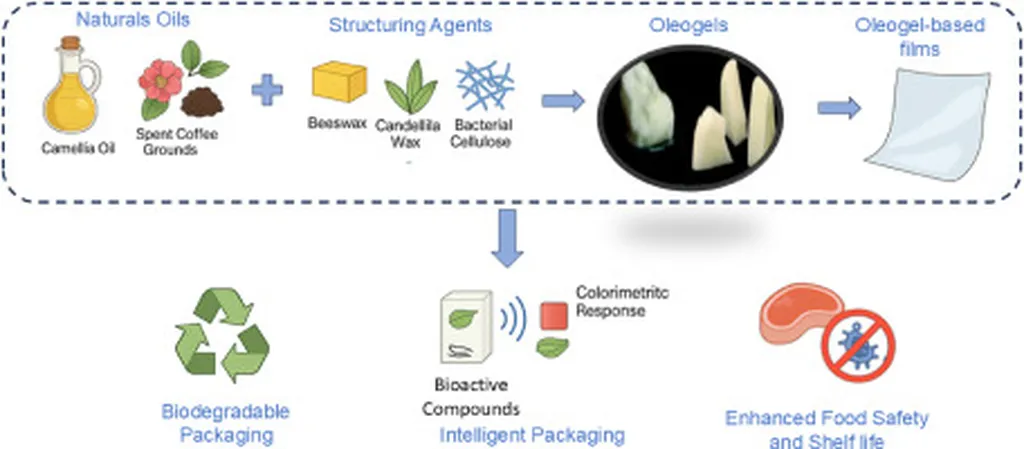In the quest to create sustainable and plant-based food alternatives, researchers are delving deep into the molecular behavior of materials designed to replace animal fats. A recent study published in the journal *Applied Rheology* (translated from German as *Applied Rheology*) has shed new light on the complex thermal transitions of oleogels, offering insights that could revolutionize the food industry and beyond.
Oleogels, structured networks of oil and a gelator, are promising candidates for replacing solid fats in food products. However, understanding their behavior during thermal transitions—such as crystallization or relaxation—has been a challenge due to the multifaceted nature of these processes. Traditional methods often require multiple devices and specimens, leading to varying boundary conditions and inconsistent results.
Enter the work of Sebastian Mannweiler from the Department of Food Material Science at the University of Hohenheim in Stuttgart, Germany. Mannweiler and his team have pioneered a novel approach to capture dynamic mechanisms at multiple length and time scales simultaneously. By coupling Raman and dielectric spectroscopy with dynamic mechanical analysis (DMA), they conducted a comprehensive study on a single sample under identical conditions.
“The complexity of thermal transitions in heterogeneous materials like oleogels demands a multifaceted approach,” Mannweiler explains. “Our study aimed to bridge the gap between mechanical, dielectric, and chemical processes to provide a holistic understanding of these transitions.”
The researchers analyzed three types of oleogels: one composed of rice bran wax (RBX), another with ethyl cellulose (EC), and a third with a 1:1 mixture of both. The DMA revealed a gradual glass transition in EC oleogels at approximately 120°C. Raman spectroscopy provided detailed molecular insights into RBX crystallization, starting at around 60°C and continuing until approximately 5°C—a process not detectable with DMA alone. Dielectric spectroscopy extended the frequency range of DMA, revealing a temperature-activated relaxation process above 500 Hz at around 5°C in RBX-containing samples.
“This multiscale analysis allows us to link mechanical, dielectric, and chemical processes to the complex thermal behavior of oleogels,” Mannweiler adds. “It’s a significant step forward in understanding and improving the applicability of plant-based fat substitutes.”
The implications of this research extend beyond the food industry. The methods and insights gained could be applied to other sectors, including the energy sector, where understanding the behavior of soft materials under varying thermal conditions is crucial. For instance, the development of advanced insulation materials or phase change materials for energy storage could benefit from the multiscale approach demonstrated in this study.
As the world continues to seek sustainable alternatives to traditional materials, the work of Mannweiler and his team offers a promising pathway. By unraveling the intricate thermal transitions of oleogels, they are paving the way for innovative solutions that could shape the future of food and energy industries alike.
Published in *Applied Rheology*, this groundbreaking research not only advances our scientific understanding but also highlights the potential for cross-disciplinary applications. As the demand for plant-based and sustainable products grows, the insights from this study will be invaluable in driving forward the development of next-generation materials.

